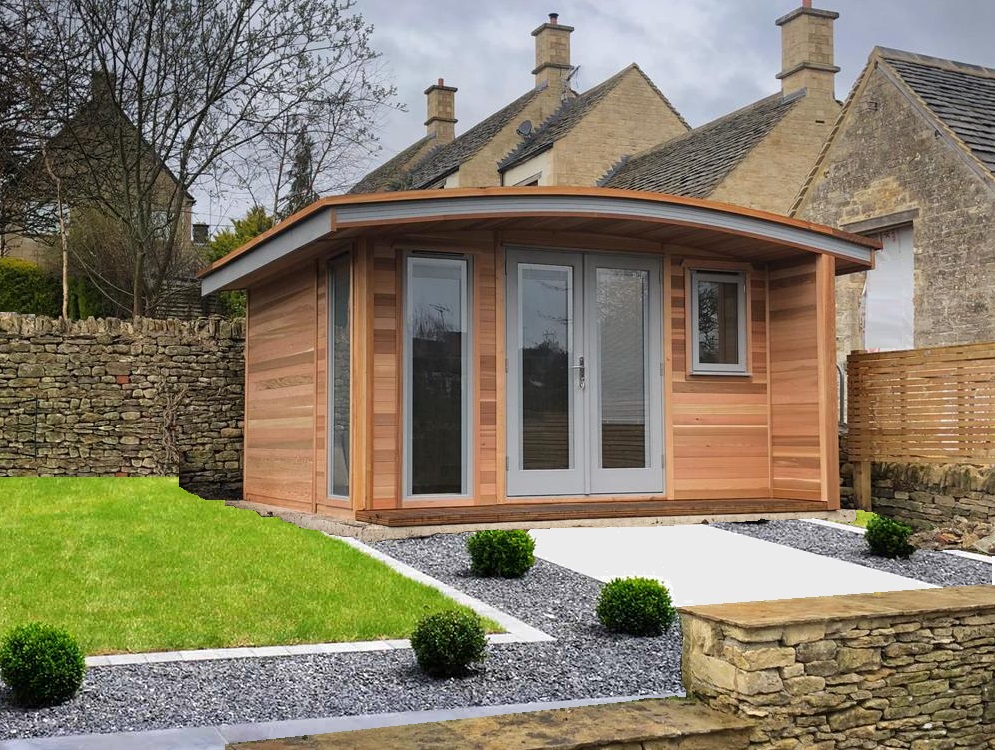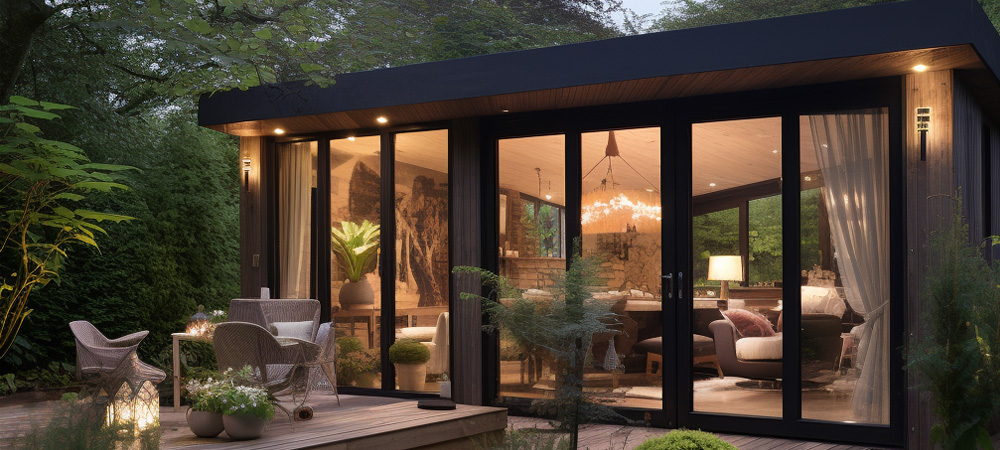Handy Ideas For Planning Permission On Garden Rooms
Wiki Article
What Size Restrictions Do You Have For Your Garden Rooms Or Other Spaces.?
If you're considering building garden rooms or conservatories or outhouses as well as garden offices the size limitations can determine whether you need planning permission. Here's a summary of the common size-related criteria that might require you to apply for permission for planning: Total Area Coverage:
Planning permission is usually required for detached outbuildings in the event that its total area including any existing outbuildings as well as the space around the house exceeds 50 percent.
Height limits
Constructions with one story The maximum eaves must not exceed 2.5 meters and for roofs that have a dual pitch, or any other roof type it shouldn't exceed 4 m.
The building is located within 2 metres of the boundary of the property. The maximum Height is 2.5 meters.
Floor Area:
The floor space of structures with larger than 30 square meters could need building regulations approval, even when planning permission isn't required.
Proximity to Boundaries
Planning permission is generally required for buildings that are within 2 m of a property boundary.
Building Usage
While it's not a strictly defined size restriction, the intended use of the garden room will determine whether planning permission is required. Planning permission may be required if, for instance, the building is intended to be used for residential or business space.
Permitted Development Rights:
Permitted Development Rights (which allows for certain types of work to be carried out without requiring full planning applications) have specific size limitations and terms. The rights vary based on the kind of property, whether it is protected as a conservation area or subject to other limitations.
Conservatories & Extensions
In general, for a single-story extension to the rear of a detached house the maximum depth is 4 metres and for semi-detached homes or terraced houses it's 3 meters. They can be raised to 8 meters or 6 meters in the Neighbourly Consultation Scheme, if certain conditions are met.
The rear extension of a single-story building should not be more than 4 meters.
Side Extensions
For side extensions The width of the extension should not exceed half the width of house that was originally built The maximum height shouldn't exceed 4 meters.
Volume Restrictions
Planning permission may be required in some areas, such as conservation areas or Areas of Outstanding Natural Beauty. Any addition that expands the size of the original dwelling by more than 10 percent (or 50 cubic meters) or the larger of the two figures (whichever is greater) requires approval for planning.
Front Extensions
Planning permission might be required for extensions that extend past the original front of the home facing the street.
It is crucial to inquire with your local planning authority because regulations can differ based on the local council's policies or the condition of your property. Even if you don't require planning permission an approval for building regulations may still be required to ensure the integrity of your structure. Read the recommended can i rent out my garden room for website tips including copyright outhouse, garden room, garden rooms near me, my outhouse, insulated garden buildings, gym outhouse, copyright garden buildings, copyright garden office, outhouses, insulated garden buildings and more.

What Planning Permits Are Required For Garden Rooms, Etc. With Respect To Listed Buildings?
Specific considerations and regulations are required when making conservatories, garden rooms or outhouses on the property of a building that is listed as heritage. There are a few important things to consider when preparing such projects.
Generally speaking, every extension, alteration, or addition of construction within the boundaries of a listed building must be approved by approved listed building permits in addition to planning permission. This is because changes can affect the character and interest of the listed property.
Historical Character and its impact
Planning permission is necessary for any new building or extension that may alter the appearance or historical character of the listed building or its surroundings. This applies to outbuildings and gardens rooms.
Materials and Design
It is essential that the design and materials that are used to construct the new structure is compatible with the architectural and historical significance and value of the original building. It is possible that this would need the use and layout of materials from the past. This will also require approval for planning.
Proximity to the listed building:
It is crucial to think about the impacts of any new structures located near the heritage building. The character of the building won't be affected if planning permission is granted.
Size and Scale:
The dimensions and size must be proportional and compatible with the structure listed. More substantial structures need thorough planning and analysis.
The location of the property:
Planning permission may be affected by the site of a building, whether it's in front, to the side or at the rear of a listed structure. The visible locations, or those which impact the view of the structure need to be assessed more carefully.
Internal structural changes:
Even if you are removing the structure that was previously in use, any internal changes to be built must also require planning approval and the building's listed consent.
Conservation Area Overlap
There are additional restrictions when the building is listed as the conservation area. It is essential to obtain permission for planning for compliance with the regulations for both listed structures and conservation areas.
Use of the Building:
Planning permission is usually needed in relation to the intended use that the garden room or any other outbuilding, will be used for. The planning authority will be more attentive to those uses that suggest an increase in significance, such residential or commercial use.
Impact of structural changes:
Any construction that might affect the structural integrity of the listed building requires approval for planning and listed building consent in order to ensure that the existing and new structures are properly connected.
Local Authority Guidelines:
Local authorities have guidelines that specify what type of construction or modification is permissible for listed buildings. These guidelines are only adhered to with planning permission.
Professional Assessments
Conservation professionals often need to conduct thorough assessments of proposed work on listed buildings. These assessments help decide if the proposed activity is in line with the building's requirements and be a part of any application for planning permission.
As a general rule In general, it is required to get planning permission and a listed construction consent for any extensions, garden rooms or conservatories, as well outhouses or conservatories that are attached to listed structures. Talk to your local planner and heritage experts very early on in the process of planning to ensure that you are in compliance with all applicable regulations and to preserve the architectural and historical integrity of the building. Take a look at the recommended garden building height for website advice including out house for garden, copyright garden room, out house, how to get power to a garden room, what size garden room without planning permission uk, ground screws vs concrete, garden rooms in St Albans, 4m x 4m garden room, Tring garden rooms, garden out house and more.

What Kind Of Permission Do I Require To Use My Garden, Etc. Regarding Agricultural Lands
If you are planning to construct a conservatory, a garden office, an outhouse or if you want to extend your land, you will need to get planning permission. Here are the key aspects: Change of use:
Land designated for agriculture is generally used for agriculture and related activities. Its conversion to residential, or even for garden structures, usually requires planning approval. It is necessary to obtain planning permission as the land's intended agricultural use will be changed.
Permitted Development Rights:
Agricultural and residential land have distinct permitted development. In some cases agricultural structures can be built without planning approval. However, these rights, are only applicable to structures used for farming.
Size and Scale
The size and scale of the proposed structure will affect the need for planning permission. Planning permission is typically required for large buildings or structures covering a larger area.
Effects of Agricultural Use
Planning permission might be required if the structure will affect the use of land for agriculture in particular by reducing the space available for livestock and crops.
Green Belt Land:
Additional restrictions are also imposed on agricultural land that is also classified as Green Belt to help prevent urban sprawl. Typically, any new building on Green Belt property requires planning approval and must satisfy the strict requirements.
Design and Appearance
The style of the structure and its appearance must fit in with the rural nature of the area. The building should not have a negative impact on the surrounding landscape.
Environmental Impact:
Any building project on land used for agriculture needs to consider the environmental impact. A study of the environment may be required for approval for planning to ensure that a new structure will not cause harm to wildlife habitats or local ecosystems.
Near Existing Buildings
The planning requirements may be affected by the proximity of the planned office or garden room is to existing agricultural structures. Constructions near farm buildings are considered differently from structures in open areas.
Access and Infrastructure:
It is important to consider the impact on infrastructure, such a roads, water, and waste management. If you seek planning permission, the city will evaluate whether the infrastructure is able to support the proposed building.
Use Class Order
The law of planning has established specific land use classes. To be in compliance with local regulations and regulations, changing the use classes to include structures other than agricultural usually requires planning approval.
Local Planning Policies:
Local planning authorities are required to have specific policies for agricultural land. These policies will determine whether or not planning approval for non-agricultural structures is granted in accordance with the local development plans and the requirements of the community into consideration.
National Planning Policy Framework
In the UK, National Planning Policy Framework (NPPF) provides guidelines as to how land can be best developed and utilized. Planning permission for agricultural structures will be evaluated according to NPPF which is focused on sustainable development and the protection of rural areas.
In conclusion the majority of cases, planning permission is required to build garden rooms, conservatories or outhouses on agricultural land. The need to change the use of land and to comply with national and local planning policies are the main reason for this. For the best results you must consult your local planning authority. View the recommended building a garden room using sips for blog advice including Tring garden rooms, best heater for log cabin, garden rooms hertfordshire, garden rooms, garden rooms in St Albans, garden room, garden room conservatory, garden buildings , garden rooms in St Albans, do i need planning permission for a garden room with toilet and more.
